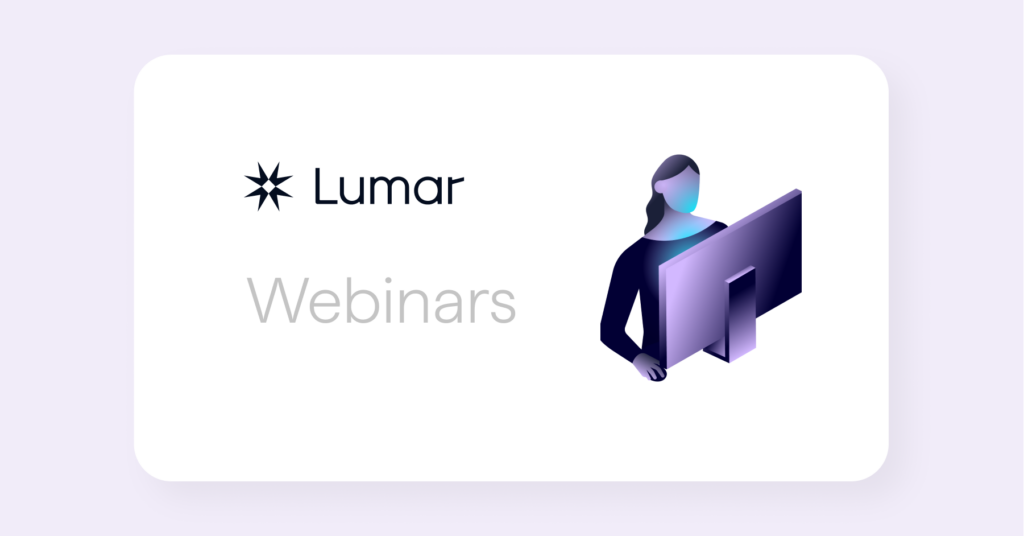Webinar Recap: Data visualization — tips and tricks for using Google Data Studio
Reporting on the success of SEO campaigns can be time-consuming. As can visualizing data so your boss can actually understand it.
The solution? Google Data Studio.
Data Studio is the automated data visualization tool that all SEOs need in their life.
But how do you get started, what’s the best way to visualize your most important Analytics and Google Search Console data, and how can you create easily accessible insights at a glance?
In our latest webinar, Sam Noble, founder of paid media consultancy Biddable Moments, shared her vast knowledge and experience using Data Studio so that you can power-up your Google Data Studio game.
Read on for the key insights.
We spend 3+ days a month manually reporting
A few months back, Sam surveyed her network to find out how long people spend manually pulling data from data sources like DeepCrawl, Google Analytics, Google Ads, and Facebook Ads, among others.
The results? On average, people spend over three days every month manually pulling data. That’s an awful lot of time that could be better used for different projects.
Manually pulling data also comes with inherent risks. Humans make 3-6 errors every single hour of every single day. That equates to a possible 126 errors every month. So what’s the solution? Google Data Studio.
Why should you use Data Studio?
Google Data Studio is free
Because Google Data Studio is cost-free, you don’t need to make an initial investment to learn how to use and explore how it can be put to use. Data Studio only starts to cost money when you use third-party data connectors to import data from sources not owned by Google.
Data studio mitigates human error
Using Google Data Studio completely mitigates human error, and data continuously updates so you can see how your website and marketing campaigns are performing live and on the fly.
It’s a time-saver
As mentioned above, people currently spend a lot of time manually reporting data. Google Data Studio mitigates the need for this wasted time and effort.
It allows you to visualize your data
People like to see data presented in different ways. Take, for example, your marketing director. They might like to see data presented in a highly visual way that can be taken at a glance.
Data Studio allows you to easily customize your reports to present data in any way you like, allowing you and your teams to make better decisions off the back of it.
It allows you to easily share data across multiple teams
By using Data Studio, you can share reports with people across the business who can then see how your website and campaigns are performing. This can facilitate more joined-up decision making.
For SEOs specifically, Data Studio reports can also be protected, which helps mitigate the risk of people accidentally (or purposely) editing your reports.
It allows you to collect data from multiple places into one dashboard
Google Data Studio allows you to collect all of your data in one place. There is one slight caveat to this, however.
Though there are currently hundreds of different third-party connectors, with Google adding more each day, some of your data sources might not currently offer one.
However, there is a way to get around this. How? By exporting the data from the unconnected source into a Google Sheet.
Data Studio tips and tricks
Formatting columns
When the platform was first released, you had to resize every single column individually. Now, Google has a workaround that allows you to resize all columns simultaneously. It’s also possible to center-align columns, though this option is hidden away.
So how do you go about doing this? Sam explains:
Report level filters
Report level filters have been a requirement for all the reports Sam has to put together for her clients. But how do you go about doing this in Data Studio?
If you want a report level filter on every page, you need to right-click, and select ‘make report-level.’ By doing this, every subsequent page you create thereafter will have your required filters listed in the header.
Drilldown data
Location performance is a great use case for drilling down on data from across the world.
You can do this on a country-by-country level, but you can also go hone in on individual areas within countries. Sam gives the example of the US, where you can visually see data from states, towns, and cities, and shows you how you would go about setting it up.
Optional metrics
Previously, we were only able to have one single graph. This meant you’d have to have lots of individual graphs for metrics like page views, visibility, and conversions.
Now, however, we have optional metrics, which enable us to compare and present different data sets on a single graph. How? Sam explains:
Calculated metrics and fields
Our metrics are only as good as the data we import. As we all know, it’s not always possible to find the exact metrics you’re looking for in Google Analytics.
Google came up with a solution within Data Studio: calculated metrics.
But what are the most common and useful ones? Sam explains:
Annotating graphs
We know it would be useful if we could annotate a graph to say ‘on this particular day, this update happened’, or ‘on this particular day we launched a new version of the site’ etc. We all track these key events in Google Analytics, but we don’t necessarily include them in our reports.
This isn’t currently a feature within Data Studio. But as Sam states, we can use calculated metrics as a workaround. Here’s how:
One of the key advantages of using calculated metrics is they don’t mess up your original data, whatever data you import into Data Studio.
The advantage of this is you’re free to play around with calculated metrics without the risk of messing up the historic data in your accounts.
Performance monitoring
Using calculated fields, Data Studio allows you to see all of your targets on a single graph.
For example, you might have organic traffic, conversion, and revenue targets. In Data Studio, you can map these against your current standings, and visually see how far off you are from achieving your ultimate goals.
So, how do you do this? Sam explains:
Customer reviews
Frustratingly, Google My Business is the only platform that Google owns that isn’t included for free within Data Studio.
So if you want to import data from Google My Business you’ll need to use a third-party connector like Supermetrics.
But by using this method, you’ll be able to monitor reviews and gain insights by analyzing the language and terms people are using in the reviews they leave.
You can then use this insight to inform your content or Google Ad campaigns by using the same language as your customers are using in their reviews. This, Sam says, will massively increase engagement: particularly in the case of PPC.
Website speed
With Core Web Vitals on the horizon, we all need to know which pages are harming the overall performance of our sites. In this regard, being able to pull website speed data from Google Analytics into Data Studio is incredibly useful.
Why? Because it can help you easily identify and prioritize the pages that need attention.
Resources and learning materials
- Google Data Studio Community Templates
- Google Data Studio Featured Templates
- Helpfullee’s Google Data Studio Guides and Tips
- Michael Howe-Ely’s advanced Data Studio Tips
- Free Google Data Studio Icons
- Sam’s online Data Studio course (use code DEEPCRAWL to save 50%)
DeepCrawl’s Google Data Studio connector
DeepCrawl’s Google Data Studio connector
Full webinar recording
Book your place at DeepCrawl Live 2020






